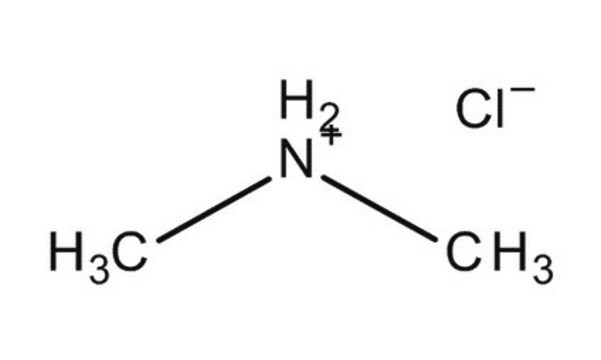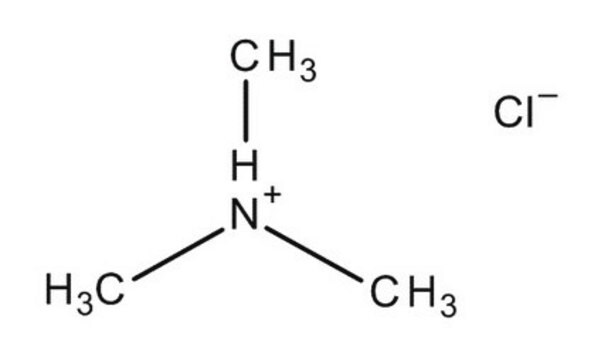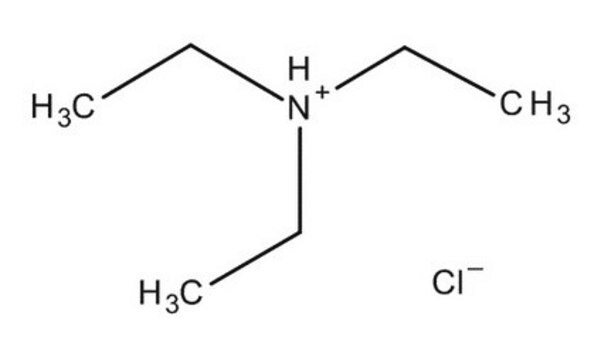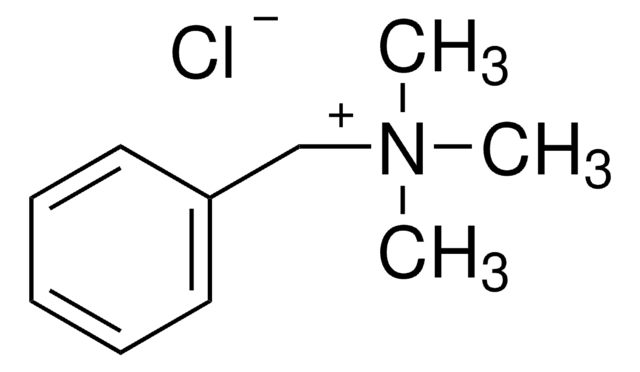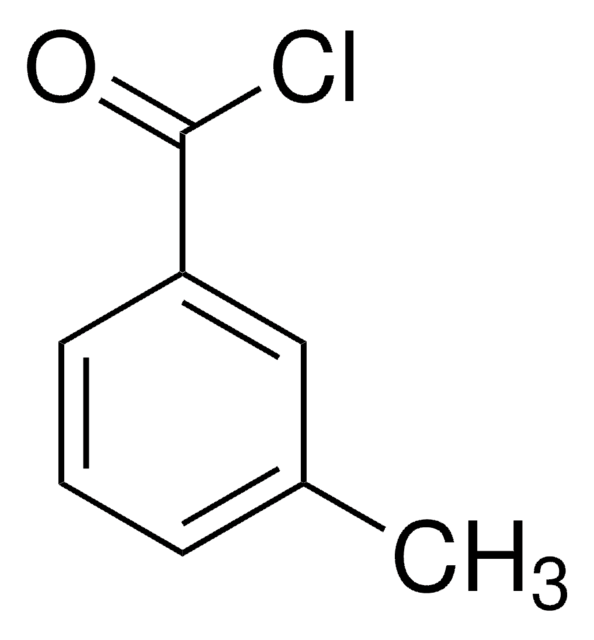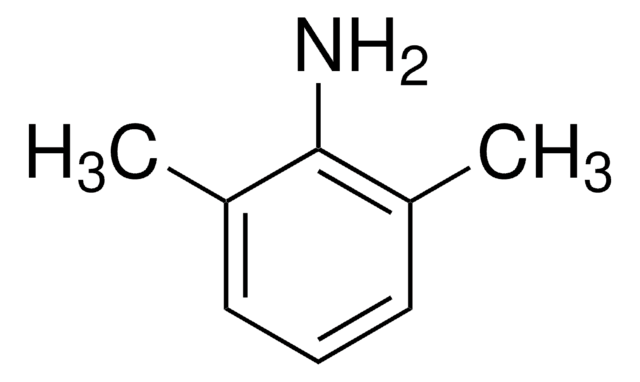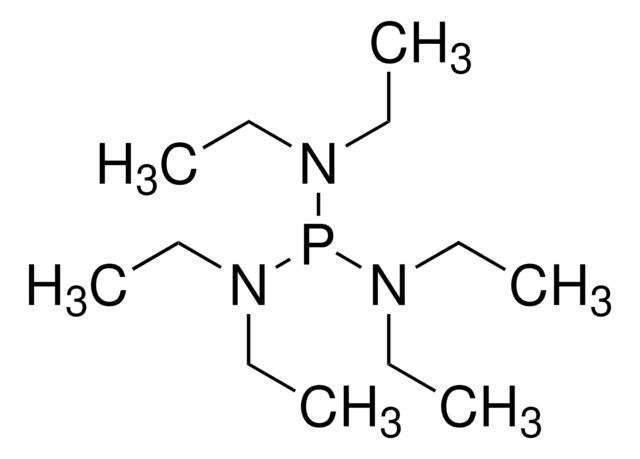8.20393
Diethylammonium chloride
for synthesis
Synonym(s):
Diethylammonium chloride, Diethylamine hydrochloride
About This Item
Recommended Products
vapor pressure
<0.00001 hPa ( 20 °C)
Quality Level
form
crystals
potency
9900 mg/kg LD50, oral (Rat)
pH
4.5-6.5 (20 °C, 10 g/L in H2O)
mp
231.8 °C
solubility
soluble 510 g/L
density
1.07 g/cm3 at 20.1 °C
bulk density
1100 kg/m3
storage temp.
2-30°C
InChI
1S/C4H11N.ClH/c1-3-5-4-2;/h5H,3-4H2,1-2H3;1H
InChI key
HDITUCONWLWUJR-UHFFFAOYSA-N
Application
- Hygroscopicity of secondary marine organic aerosols: Mixtures of alkylammonium salts and inorganic components.: This study explores the hygroscopic properties of secondary marine organic aerosols, highlighting the role of alkylammonium salts, including diethylammonium chloride, in influencing aerosol behavior in the atmosphere (Asadzadeh et al., 2021).
- Simulation of Deep Eutectic Solvents′ Interaction with Membranes of Cancer Cells Using COSMO-RS.: This paper discusses the simulation of interactions between deep eutectic solvents containing diethylammonium chloride and cancer cell membranes, providing insights into their potential use in biomedical applications (Mbous et al., 2020).
Analysis Note
Identity (IR): passes test
Signal Word
Danger
Hazard Statements
Precautionary Statements
Hazard Classifications
Acute Tox. 3 Dermal - Acute Tox. 4 Inhalation - Acute Tox. 4 Oral - Eye Dam. 1 - Skin Corr. 1A - Skin Sens. 1 - STOT SE 3
Target Organs
Respiratory system
Storage Class Code
6.1C - Combustible, acute toxic Cat.3 / toxic compounds or compounds which causing chronic effects
WGK
WGK 1
Flash Point(F)
Not applicable
Flash Point(C)
Not applicable
Certificates of Analysis (COA)
Search for Certificates of Analysis (COA) by entering the products Lot/Batch Number. Lot and Batch Numbers can be found on a product’s label following the words ‘Lot’ or ‘Batch’.
Already Own This Product?
Find documentation for the products that you have recently purchased in the Document Library.
Customers Also Viewed
Our team of scientists has experience in all areas of research including Life Science, Material Science, Chemical Synthesis, Chromatography, Analytical and many others.
Contact Technical Service